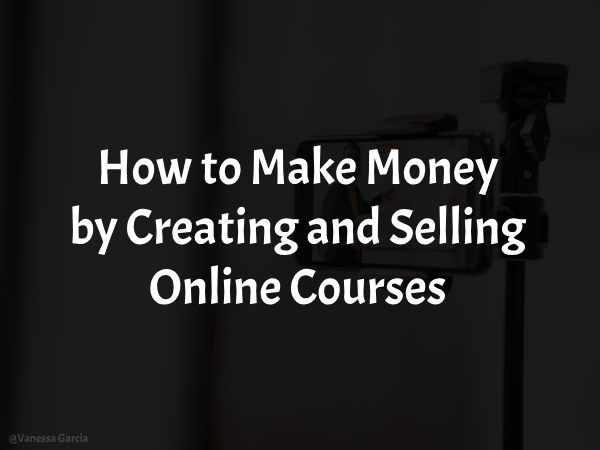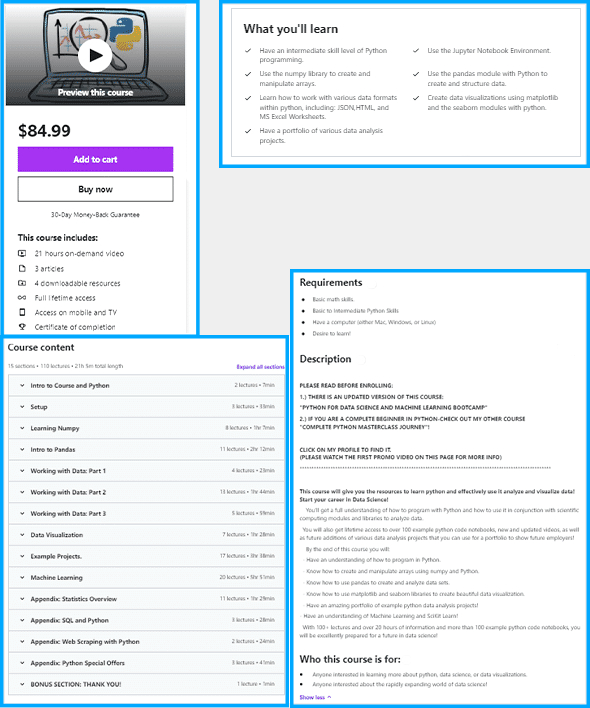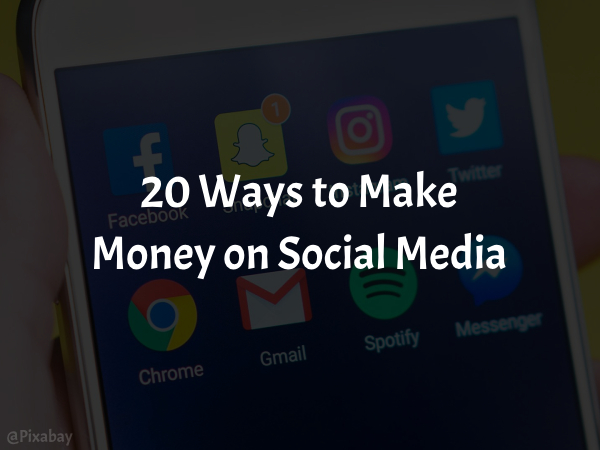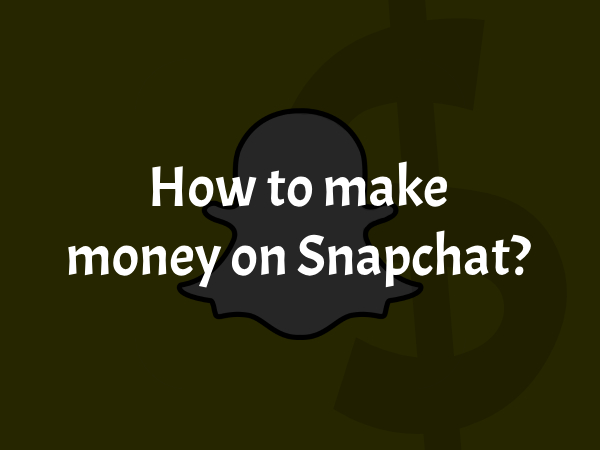How to Make Money by Creating and Selling Online Courses 2025

Online Courses: Can I Really Make Money by Creating and Selling Online Courses in 2025?
The short answer is yes. This method of earning income online remains one of the most powerful—and surprisingly, still underutilized—opportunities out there. Many people have the talent needed to succeed with it, yet they don’t realize its full potential.
Before we dive into the detailed process of how to make money online through this method, let’s first take a look at a real-world example that illustrates how it works. In this article, our goal is to show you exactly how you can earn money by creating and selling educational courses, whether in written form or video content (we’ll be focusing more on video-based content).
In a way, this article itself is a free written course. Yet even with free content like this, there are multiple ways for creators to generate income.
Think about YouTube: you can learn just about anything on the platform. It’s filled with countless free educational courses covering topics like programming, design, blogging, and more. While creators offer their content for free, they still find various ways to monetize their channels.
Selling courses follows a similar concept, but instead of giving access for free, you offer your course to paying customers. Viewers who are interested in learning from you will need to purchase the course in order to access and benefit from it. This is where the income opportunity lies.
As always, we’ll do our best to guide you through a step-by-step process, offering as much detail as possible, to help you start making money by selling courses online. If you’re curious about how this works and want to learn more, keep reading.
How to make money from creating and selling online courses
What Are Online Courses?

Online courses are the modern version of traditional training programs. They allow you to create structured educational content and share it in a way that helps users progress in their understanding of a particular subject.
An online course is essentially a curriculum organized into modules or lessons. It can include videos, images, text, and hyperlinks. Once created, a course can easily be shared via a link or by sending email invitations to users.
What Do You Need to Create Your Own Course?
Anyone can get started in this field and earn money from it as long as a few key elements are in place. Here’s what you’ll need:
1. Passion for the Field
Loving what you do is the first and most important factor in staying consistent and growing in any domain. If you’re passionate about teaching, you’ll find joy in the process and stay motivated to improve and keep going.
2. Talent
You’ll be teaching a specific topic, whether it’s cooking, programming, painting, marketing, business, photography, design, or anything else you excel at or have experience with. It could also be something directly related to your profession or daily work.
3. Knowledge
Before starting any project—online or offline—you need to thoroughly understand what you’re getting into.
Ask yourself, what exactly is this? How does it work? How can I get started? What are the best practices?
The more you know, the easier it will be to move forward, master it, and eventually turn it into a profitable endeavor. And since you’re going to create and sell your own course, you’ll also need to understand where and how to sell it (technically, you’re not “selling” it directly; you’re offering it to people, and they pay to access and learn from it).
4. Tools
If you’re creating a video-based course (as opposed to a written one), you’ll need a few basic tools:
- A good camera (this could be a smartphone, webcam, or any other recording device)
- A quality microphone (there are budget-friendly options available)
- Editing software to refine your recorded content
So, you’ll either need to learn some basic video editing yourself or find someone reliable to help you with it. We’ll explore this in more detail later in the article.
Related: What Do You Need to Start Making Money Online.
How Do You Make Money from Creating and Selling Online Courses?
How Do You Actually Start Building Your Online Course?
Following what we outlined above (and will expand on further below), the process of creating and profiting from an online course isn’t difficult or out of reach. In fact, with a few simple steps, you can begin building and monetizing your course right away.
Here’s a quick roadmap:
- Meet the requirements mentioned earlier (at least most of them).
- Create your course (we’ll explain how to do this in Section 2 below).
- Upload your course to a platform so people can access it. Include details like course description, pricing, and what learners can expect.
- Promote and market your course to reach your target audience.
What you will also need will be mentioned in the next section:
A Step-by-Step Guide to Creating, Selling, and Earning from Your Course
The guide below will walk you through the essential steps to start building your online course, launching it, and turning it into a source of income:
1. Choosing the Right Idea
You know yourself best—your talents, your skills, and what you’re passionate about. Once you’ve chosen a general area for your course (e.g., programming, design, art, or business), you’ll need to narrow it down to a specific topic.
For example, programming has many languages, design includes various types, art comes in different forms, and the business world covers a wide range of fields.
After choosing your topic, define your target audience:
- What countries or regions are you targeting?
- Which language will you use?
- Are your students beginners or advanced learners?
- hat are their interests or needs?
(Of course, learners from outside your primary target may still discover your course, and that’s a bonus!)
2. Creating the Course
Once you’ve decided on your subject, it’s time to build the course. This process involves planning the course structure, writing the script, gathering visual materials, recording, editing, and more.
You can either create your course directly on the platform where you’ll sell it—using its built-in editing tools—or build it offline using a course-authoring tool before uploading.
To keep it simple, here’s what you’ll typically need:
- A clear course idea
- Understanding of your target audience (age group, experience level, etc.)
- The language of instruction (English is often the best choice for a global audience)
- A full outline of your course content
- Defined learning objectives and expected outcomes
- A camera or screen recording software + microphone
- Time to record your video lessons
- Video editing software
- Downloadable resources, scripts, and any additional files
- A platform (or multiple) to host and sell your course
- Time to upload your materials to the platform(s)
3. What Should Your Course Include?
While every course is different depending on its topic, tools used, and structure, here’s a general idea of what courses often include using an example from Udemy (this will vary based on the platform and the subject matter):

- Video lectures (primary content)
- Downloadable resources (PDFs, worksheets, templates)
- Quizzes and assessments
- Assignments or projects
- Access to a discussion board or Q&A section
- Completion certificate (on some platforms)
4. Choosing the Right Platform to Sell Your Course
We’ll cover several platforms where you can host and sell your online course. However, it’s important to choose the one(s) that best align with your goals.
When selecting a platform, consider the following factors:
- Platform reputation and reliability
- Payment options and ease of receiving income
- Discount policies and revenue share models
- Free vs. paid hosting options
- Traffic volume (how many potential students the platform attracts)
- Ease of use and available support
(We’ll provide a detailed comparison of popular platforms below to help you choose the best fit for your course.)
5. Promoting Your Course
Once you’ve created your course and published it on the platform(s) of your choice, the next critical step is marketing and promotion. Depending on the platform you’re using, you may need to take on a more active role in attracting potential students—those who may be willing to pay to enroll in your course.
Marketing can significantly increase your course’s visibility and, in turn, your earnings. There are both free and paid promotion strategies, including:
- Promoting your course through your personal blog (if you have one)
- Sharing it via YouTube channels or social media accounts
- Running paid ad campaigns on social media platforms
- Using online advertising networks, such as Google Ads
- … and other digital marketing tactics
Ways to Earn Money from Courses

As we mentioned earlier, earning from courses isn’t limited to selling paid video content through platforms. There are several other models you can explore, depending on the format and delivery method of your content.
1. Video-Based Content
– Paid Courses:
These are the most straightforward: you create a course, upload it to a platform, and earn revenue from learners who pay to access it. We’ve covered this model in detail earlier.
– Free Courses:
Instead of charging directly, you can publish your educational videos for free, mainly through platforms like YouTube. Many channels host full courses as playlists focused on a specific topic or skill.
In this model, creators primarily earn revenue from ads shown before or during their videos, which is the main income stream for most YouTubers.
Related: 15 Best Ways to Make Money on YouTube.
2. Text-Based Content
– Ebooks and Print Books
You can also deliver your educational material as a digital or printed book. Write and format the content (optionally with images), then publish it on platforms like Amazon Kindle Direct Publishing (KDP).
Buyers can either download the ebook or order a physical copy. Amazon handles the printing and shipping, while you earn a percentage from each sale.
– Educational Blogs
Another option is to share your knowledge through a blog. You can structure your content as a series of lessons or mini-courses in article format.
(Just like what you’re reading now, this article is essentially a mini-course on how to earn money by creating online courses!)
Top Platforms for Selling Online Courses
Now let’s explore some of the most popular websites and platforms where you can publish or even create your online courses from scratch. Below are some of the leading platforms for building and selling online courses:
1. Udemy.com
Udemy is arguably the most popular online platform for both selling and enrolling in courses. It’s known for its massive course library, frequent discount promotions, and its diverse pool of instructors.
Globally ranked #450, Udemy receives over 78 million visits per month.
Despite competition from major players like Domestika and Skillshare, Udemy maintains a unique position in the market by offering a wide variety of topics for all skill levels and budgets without focusing on a specific niche.
Courses are video-based, and instructors guide you through structured lessons you can follow at your own pace. Most courses also include lifetime access and downloadable resources for students.
2. Teachable.com
Teachable is an all-in-one platform that helps you create and sell online courses with ease. It handles everything from web hosting to payment processing.
Globally ranked around #5,512, Teachable sees over 10 million monthly visitors.
This platform is ideal for entrepreneurs and creators who want full control over branding and pricing while also having access to robust course-building tools.
3. Thinkific.com
Thinkific is a tech company that offers a platform for individuals and businesses to create, host, and sell online courses under their own brand and domain. It provides all the tools you need for every stage of your course journey, from initial creation to post-launch marketing.
Globally ranked around #7,756, Thinkific receives 7 million+ visits per month.
Thinkific is a great choice for those looking for a more customized and professional learning experience for their audience.
4. Skillshare.com
Skillshare is an online learning community where anyone can discover, take, or even teach a class. It’s especially known for creative subjects like design, illustration, photography, and lifestyle.
Anyone can join Skillshare to start watching classes, complete projects, or become a teacher themselves.
As of April 2025, Skillshare had a global rank of #16,616, with around 3.3 million monthly visitors.
5. Kajabi.com
Kajabi is an all-in-one business platform designed for knowledge entrepreneurs. It makes it easy to build, market, and sell online courses, memberships, coaching programs, and more, all without needing to know how to code or worry about broken plugins or complicated integrations.
Globally ranked around #15,711, Kajabi receives approximately 2.6 million monthly visitors.
6. Podia.com
Podia is an online platform that allows you to create and sell courses, memberships, and digital downloads such as eBooks. With Podia, you can host your course content professionally, build a storefront for your products, and accept payments directly from your own website.
It is globally ranked around #24,960 and sees about 2.2 million visits per month.
7. LearnWorlds.com
LearnWorlds is another online course creation platform that enables you to build, market, and sell educational content. While its global reach is more modest, it still offers powerful tools for course creators. The platform receives under 1 million monthly visitors.
8. CreativeLive.com
CreativeLive is a popular online learning platform that specializes in creative and professional skills such as photography, design, music, crafts, and business. It offers various learning formats, including classes, workshops, downloadable materials, and structured learning paths.
As of April 2025, CreativeLive had a global rank well outside the top 100,000, with around 224.7 thousand monthly visitors.
9. LearnDash.com
LearnDash is a WordPress Learning Management System (LMS) used by businesses, universities, training organizations, and independent entrepreneurs to create and sell courses directly from their own websites. It is known for its flexibility and deep integration with WordPress.
As of early 2025, LearnDash had a global rank also outside the top 100,000, with about 190 thousand monthly visitors.
10. Other Platforms
There are, of course, many other platforms worth exploring.
Note: The rankings provided above are based on global website traffic data from SimilarWeb, recorded in February 2025, and accurate as of April 2025. These rankings fluctuate over time.
It’s also important to note that site ranking doesn’t always reflect platform quality. For example, LearnDash is a plugin for building course websites, not a traditional hosted platform, so its traffic may appear lower even though it’s a powerful tool.
In general, websites ranked within the top 100,000 globally are considered strong performers. The closer a platform ranks to #1 (a spot long held by Google), the more authoritative and widely used it typically is.
FAQ:
What Are Online Courses?
Online courses are the modern version of traditional training programs. They allow you to create educational content and share it in a structured way that helps users gradually deepen their understanding of a specific topic. Typically, a course is built around a structured curriculum divided into modules and may include videos, images, texts, and hyperlinks.
Can I Make Money by Creating Online Courses?
Absolutely yes! According to LearnWorlds, creating and selling online courses is a thriving international market. The e-learning industry is expected to surpass $325 billion by 2025, with an annual growth rate of around 5% (Global Market Insights). Becoming an online instructor can generate anywhere from a few hundred dollars a year to a six-figure income.
How Much Can You Earn from an Online Course?
According to OnlineCourseIgniter, you can make anywhere from $500 to $50,000 or more by teaching online courses. How much you actually earn depends on the size of your audience, your ability to convert them into buyers, and the price of your course.
For example, if 1,000 people visit your sales page and 5% convert at a price of $197, you’ll earn $9,850.
Is Creating a Course Just About Recording Videos?
While video-based paid courses are the most common format, they’re not the only way to deliver valuable content. You can also offer courses through eBooks, blog articles, YouTube videos, and more, either as standalone products or alongside your paid courses.
Where Can I Sell My Courses?
There are plenty of platforms where you can publish and sell your courses, including Udemy, Skillshare, Thinkific, Teachable, Podia, LearnDash, LearnWorlds, and many others that provide tools to host, market, and sell your educational content.
Conclusion:
That’s everything you need to know in this brief guide on how to start and earn money from online courses (or similar formats).
You might also want to check out our related article, “How to Make Money by Creating Videos.”
To wrap up, this field is highly profitable, as many success stories have shown. However, your results depend on your ability to attract and convert visitors, which requires meeting the key requirements we’ve outlined above.
Good luck!






